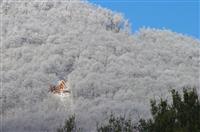
苏必利尔湖(Lake Superior)是世界上面积最大的淡水湖,1622年为法国殖民者所发现,湖名取自法语Supérieur(索菲莉尔),意为上湖。该湖为美国和加拿大共有,被加拿大的安大略省与美国的明尼苏达州、威斯康星州和密歇根州所环绕。湖面东西长616千米,南北最宽处257千米,湖面平均海拔180米,水面积82414㎞²,最大深度405米。蓄水量1.2万㎞³,占五大湖蓄水量一半以上,以蓄水量计算,该湖是世界第四大湖(不分咸水淡水,储水量前三分别为里海,贝加尔湖和坦噶尼喀湖)。湖岸线长3000千米,沿岸森林密布,北岸曲折多湖湾。有近200条河流注入湖中,以尼皮贡和圣路易斯河为最大。
The largest freshwater lake in the world, Lake Superior
Lake Superior is the largest freshwater Lake in the world. Discovered by French colonists in 1622, the Lakes name comes from the French Superieur (Superior), meaning "upper Lake". The lake, which is shared by the United States and Canada, is surrounded by the Canadian province of Ontario and the American states of Minnesota, Wisconsin and Michigan. The lake is 616 kilometers long from east to west and 257 kilometers wide from north to south. The average altitude of the lake is 180 meters, the water area is 82,414 m2, and the maximum depth is 405 meters. The lake holds 12,000 cubic meters of water, accounting for more than half of the five Great Lakes. In terms of water storage, the lake is the fourth largest lake in the world (the Caspian Sea, Lake Baikal and Lake Tanganyika are the top three in terms of water storage, regardless of fresh water). The shoreline of the lake is 3000 kilometers long, and the coast is densely forested, and the north shore is winding and winding. Nearly 200 rivers feed into the lake, with the Nipigon and St. Louis rivers being the largest.




